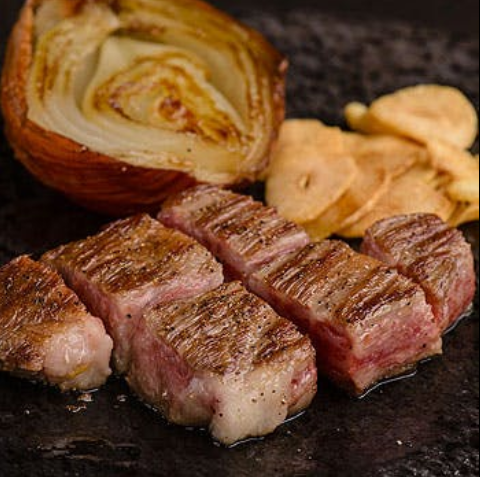All You Can Eat A5 Wagyu? - Ginza Steak
Picture this: you’re in Japan, you want to get your eats on, and you want something nice. How about some good, no-nonsense Japanese A5 Wagyu? Located in the fancy district of Ginza (Tokyo), Ginza Steak will not disappoint - not only for the qualify, but the price as well. There are quite a bit of steakhouses that will serve local wagyu, but finding the right place will satisfy your cravings without destroying your wallet.
What is Wagyu?
First thing’s first, let’s talk about the term: “wagyu”. What does it mean? The literal translation means “Japanese Beef”, however, it is widely referred to the Japanese local types of cattle, such as Kobe Beef. A lot of restaurants in the US will claim that they have wagyu, but unless they imported it from Japan, or have access to one of the Japanese cattle, it is not wagyu. If you aren’t familiar with why wagyu is so delicious, it is largely contributed to how the cattle is raised - lots of high quality feed mixed with top-notch physical care, which causes the meat to be extremely marbled, enhancing the texture and taste.
What is A5?
A familiar question in regards to the Japanese wagyu is what exactly does the grade “A5” mean. The grading is based off of a combination of the best parts of a cut, combined with the marbling, color, texture, and overall quality. Check out this article from The Wagyu - the wagyu experts to understand how the grading works and what factors are used to determine is the number and letter grading.
Ginza Steak and Our Choice
There are two locations of Ginza Steak, one in Shinbashi and the other in Ginza - our visit consisted of the location in Ginza, next to the Nissan Crossing building. The wagyu is served teppan style, where the chef cooks the meat on a large cooking surface area, to be able to handle multiple diners at the same table.
For our experience, we decided to go with the A5 Akami course for 7800 yen for the most basic form of the A5 experience. There are other options as well, a course that has a combination of Akami and Shimohuri for 9800 yen, a course with abalone in addition to for 12,800 yen, and a course with a fillet steak and abalone in addition to for 14,800 yen. If you’re curious to what Akami and Shimohuri wagyu are:
Akami - marbled, but slightly leaner
Shimohuri - marbled, quite fatty
Most people will option for the shimohuri, but in our experience with A5, unless you’re extremely used to eating super-fatty beef, shimohuri might not be best suited for your stomach. Don’t get us wrong, the shimohuri is amazing and nothing like the fat on a steak, but the juices are quite oily.
Our A5 Akami Course Menu
Our course menu below:
A5 Wagyu Patty and Mushroom Salad
Cold Potage of Garlic and Almonds
Teppan-Steamed Shabu
A5 all-you-can-eat Akami Steak
Garlic Rice and A5 Beef Soup
Today’s Ice Cream
A5 Wagyu Patty with Mushroom Salad
Served with fresh cut mushrooms covered in a tart sauce, the A5 cuts were tender yet flavorful
Cold Potage of Garlic and Almonds
A very light soup with slices of almond and fried garlic, just enough to get your appetite going
Teppan-Steamed Shabu
A slightly more flavorful dish, thin-sliced A5 beef covered with pickled onions and radish
A5 all-you-can-eat Akami Steak
Served with a side of bottomless fresh cut white onions, the akami A5 was the perfect balance of lean and fatty beef
Garlic Rice and A5 Beef Soup
A nice addition to the end of the meal, soothing your full stomach with a soft flavor of rice and beef stock
Today’s Ice Cream
Vanilla bean ice cream topped with a thin layer of raspberry puree, with a gentle green tea to reset your pallet
Final Thoughts
While most people believe that you have to pay $200 and have to have the most marbled meat, when it comes to getting your fill without regretting it, we recommend the Akami cuts over the Shimohuri. The Shimohuri might be a better choice if it were very small bites as there is more flavor to be had, but for overall quality (for our pallet) of the meat, Akami is the way to go.
The excess sides such as lobster, abalone, caviar, etc… can be skipped if you want the full wagyu experience - we thought that the course provided to us was plenty enough, mixed with the correct amount of diverse flavors. We hope this guide has helped you and let us know if you decide to go, tell us how your experience went!












